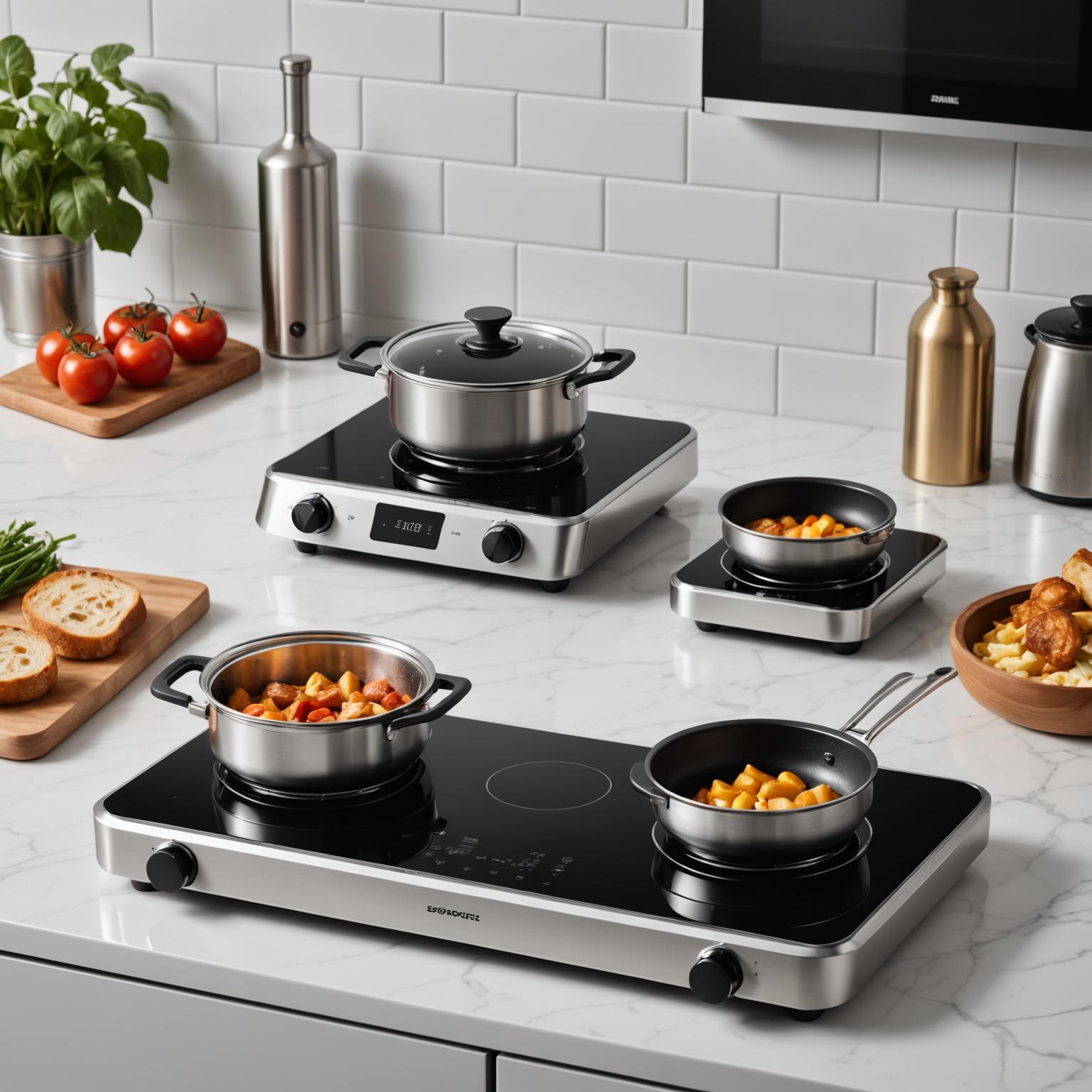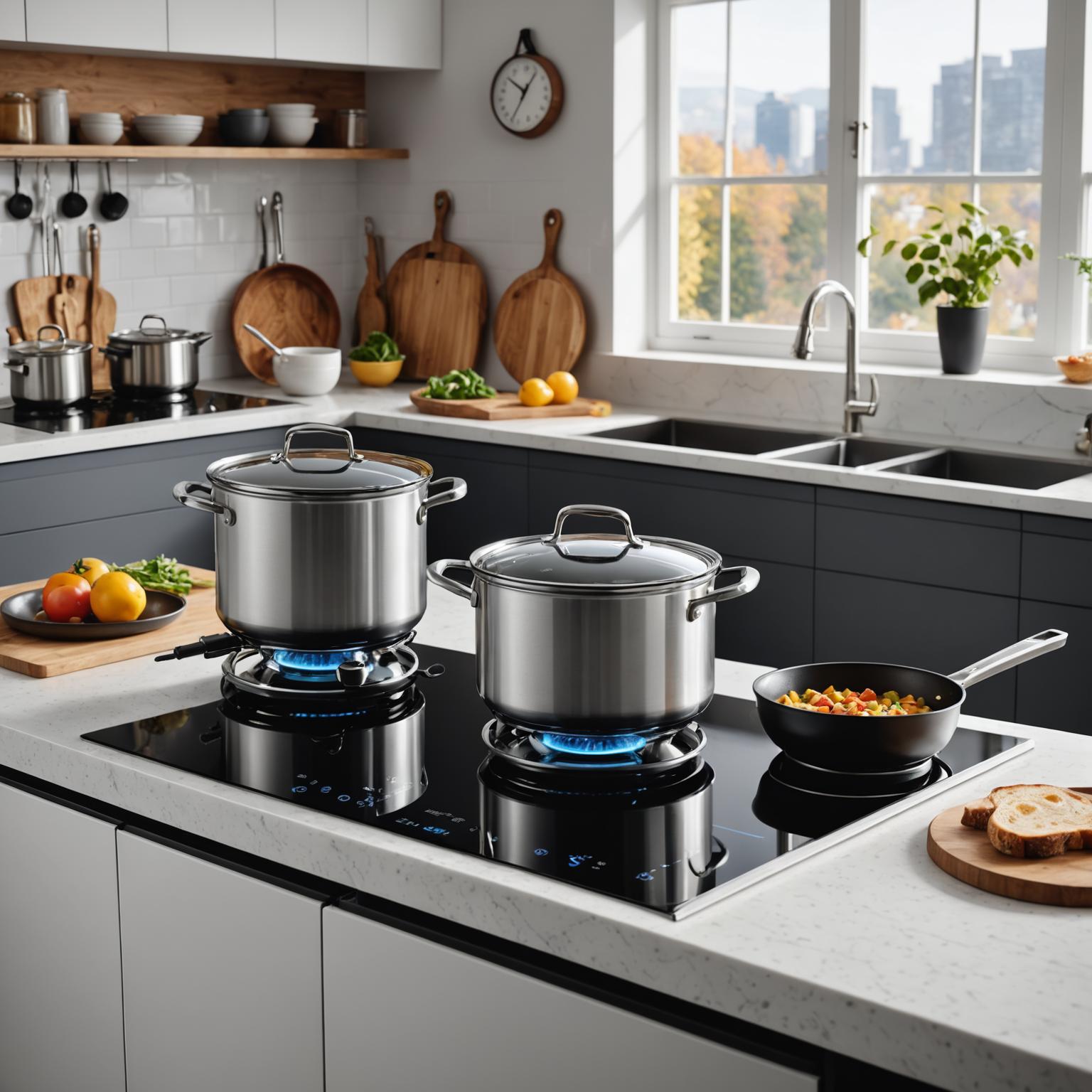Choosing the right portable stove can transform your cooking experience, whether you're in a small apartment, a dorm room, or simply need an extra burner for a holiday feast. The market is filled with innovative options, but the primary debate often comes down to two popular technologies: the traditional electric cooktop and the modern induction cooktop. Understanding the fundamental differences between an electric portable stove and an induction model is key to selecting the perfect appliance for your culinary needs.

An electric portable stove is a familiar and straightforward appliance for many. These cooktops typically work by passing electricity through a heating element, which could be a visible coil or a flat ceramic or glass surface. This element gets hot and transfers its heat to the pot or pan through direct contact. Their main advantage is versatility; they are compatible with almost any type of flat-bottomed cookware, including glass, ceramic, and aluminum. Models like the Electric Compact Cooktop emphasize ease of use with intuitive dials for precise temperature control, making them suitable for everything from a gentle simmer to a rolling boil. While they may take a bit longer to heat up and cool down compared to their induction counterparts, their reliability and broad cookware compatibility make them a dependable choice for everyday cooking tasks.
The induction portable stove represents a leap forward in cooking technology. Instead of using a heated element, it generates a magnetic field that directly heats the cookware itself. This method is incredibly efficient, as very little energy is lost to the surrounding air. The result is a fast heating portable stove that can bring water to a boil in a fraction of the time an electric stove would take. This technology also offers unparalleled precision and safety. Since the cooktop surface doesn't get hot itself (only the pan does), the risk of burns is significantly reduced. An induction portable stove, often featuring a sleek, minimalist design with smooth-turn knobs, provides instantaneous temperature adjustments, giving the cook ultimate control for delicate sauces or a perfect sear. The one major consideration is that it requires magnetic cookware, such as cast iron or stainless steel, to function.
When comparing these two types of portable stove, several key differences emerge. The most significant is heating speed and efficiency. The induction cooktop is the clear winner, functioning as a fast heating portable stove that uses energy more effectively and cooks food quicker. In terms of safety, induction again has the edge because the surface remains cool to the touch. However, the electric portable stove shines in cookware compatibility, accepting a wide range of materials without issue. Control is excellent on both, but the instantaneous response of an induction cooktop provides a level of precision that professional chefs appreciate. Price can also be a factor; while induction models have become more affordable, entry-level electric cooktops are often less expensive.
Ultimately, the best choice depends on your priorities. If you value speed, energy efficiency, and a safer cooking environment, and you either own or are willing to invest in magnetic cookware, the induction portable stove is an outstanding option that will elevate your cooking. If, however, you prioritize versatility, want to use your existing collection of pots and pans, and are looking for a more budget-friendly and straightforward solution, the classic electric portable stove remains a powerful and reliable workhorse. Both technologies offer the convenience of expanding your kitchen's capabilities, allowing you to create delicious meals wherever you have an outlet.

The Classic Electric Portable Stove: Simplicity and Reliability
An electric portable stove is a familiar and straightforward appliance for many. These cooktops typically work by passing electricity through a heating element, which could be a visible coil or a flat ceramic or glass surface. This element gets hot and transfers its heat to the pot or pan through direct contact. Their main advantage is versatility; they are compatible with almost any type of flat-bottomed cookware, including glass, ceramic, and aluminum. Models like the Electric Compact Cooktop emphasize ease of use with intuitive dials for precise temperature control, making them suitable for everything from a gentle simmer to a rolling boil. While they may take a bit longer to heat up and cool down compared to their induction counterparts, their reliability and broad cookware compatibility make them a dependable choice for everyday cooking tasks.
The Modern Induction Portable Stove: Speed and Precision
The induction portable stove represents a leap forward in cooking technology. Instead of using a heated element, it generates a magnetic field that directly heats the cookware itself. This method is incredibly efficient, as very little energy is lost to the surrounding air. The result is a fast heating portable stove that can bring water to a boil in a fraction of the time an electric stove would take. This technology also offers unparalleled precision and safety. Since the cooktop surface doesn't get hot itself (only the pan does), the risk of burns is significantly reduced. An induction portable stove, often featuring a sleek, minimalist design with smooth-turn knobs, provides instantaneous temperature adjustments, giving the cook ultimate control for delicate sauces or a perfect sear. The one major consideration is that it requires magnetic cookware, such as cast iron or stainless steel, to function.
Head-to-Head: Electric vs. Induction
When comparing these two types of portable stove, several key differences emerge. The most significant is heating speed and efficiency. The induction cooktop is the clear winner, functioning as a fast heating portable stove that uses energy more effectively and cooks food quicker. In terms of safety, induction again has the edge because the surface remains cool to the touch. However, the electric portable stove shines in cookware compatibility, accepting a wide range of materials without issue. Control is excellent on both, but the instantaneous response of an induction cooktop provides a level of precision that professional chefs appreciate. Price can also be a factor; while induction models have become more affordable, entry-level electric cooktops are often less expensive.
Which Portable Stove is Right for You?
Ultimately, the best choice depends on your priorities. If you value speed, energy efficiency, and a safer cooking environment, and you either own or are willing to invest in magnetic cookware, the induction portable stove is an outstanding option that will elevate your cooking. If, however, you prioritize versatility, want to use your existing collection of pots and pans, and are looking for a more budget-friendly and straightforward solution, the classic electric portable stove remains a powerful and reliable workhorse. Both technologies offer the convenience of expanding your kitchen's capabilities, allowing you to create delicious meals wherever you have an outlet.






